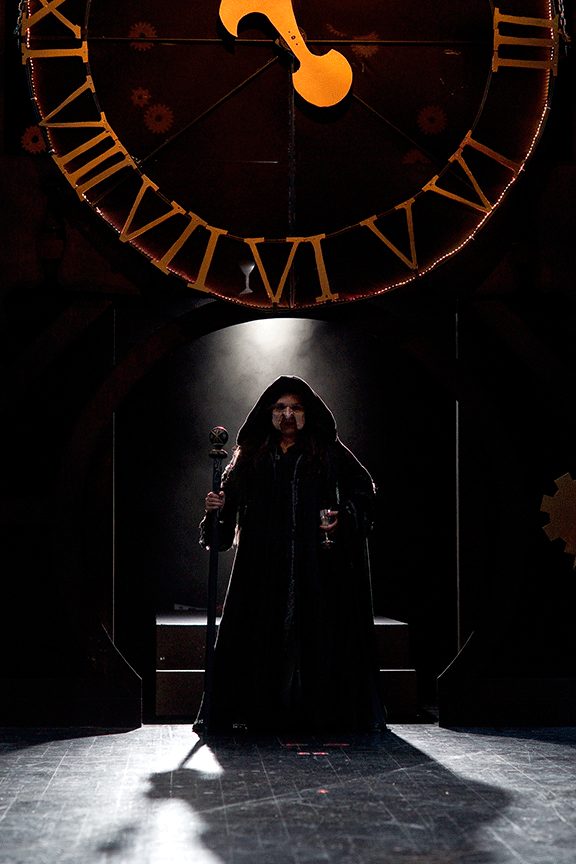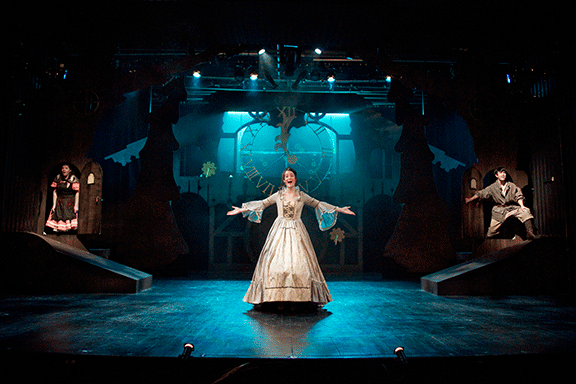Who cares, the cow is gone!
A review of Hart House’s production Into the Woods
Once upon a time, all your favourite stories were not as they seemed. This is the darker world that the audience finds themselves within in Hart House’s Into the Woods. The play craftily weaves Disney classics with enough twists and turns to make you wonder if you’ll ever be able to leave the woods.
The draw of Into the Woods is in its status as an adaptation of classic tales, from Jack and his beanstalk to Cinderella. Orchestrated by seasoned director Jeremy Hutton, this adaptation is a story re-telling masterpiece. At no set point does Into the Woods break from the old stories, but rather there is a slow unraveling, giving new life to old tales. Forgotten moments from your favourite bedtime stories are revamped in ways that you never would have dreamed of, changing beloved characters into strangers.
Hutton is original in his quest to put familial relationships at the forefront of his adaptation, and his childless baker is perhaps the most prominent character of the play for this very reason. Played by the returning James King, the baker leads us through the play in the confused vein of one who has been unfairly tasked with doing something that they have no experience in. He is relatable and charmingly human among a crowd of wolves, giants and witches. Likewise, in discussing the highlights of the show, Milky White-the cow played by Maksym Shkvorets- must be given his due, simply because I know very few people who could crawl across a stage in a cow costume for the better part of three hours and still garner one of the loudest rounds of applause. On that note, however, credit must be given to Moulan Bourke’s portrayal of Florinda the witch. From the moment she first appears rapping on stage, Bourke’s performance only gets better. Though she thrills throughout the first act, her best moment is in the second, when she brings down both the house and the omnipresent clock in her solo, “Last Midnight”.
This performance calls attention to the expertise of the set design. Joe Pagnan’s layout commands attention to the clock at its centre, which domineers over the characters throughout the entirety of the play—a force greater than the forest itself. It’s the collapse of the clock that brings about the beginning of the end. It’s marked by a realisation that without a narrator and without a story to guide them, these characters are lost, unknowingly cogs in a greater story that can’t possibly have a happy ending. Into the Woods makes us question if the stories that we have always loved are the whole truth, and that is the most frightening thing of all.

It is this darkness that remains pervasive throughout the play, and Hutton’s use of light and dark is reflected in the characters as much as it is within the play itself. The woods change everyone for better or for worse, and when combined with the slow shift from cheerful numbers to more sinister ones, it is impossible to see who is leading whom in the play. Throughout the production, the audience must grapple with the fact that none of the characters are entirely good or bad, dark or light, right or wrong.
In the end, Into the Woods is a story about stories and why we tell them. Hart House’s production stays true to Stephen Sondheim’s original vision of the duality of light and dark within children’s stories. The audience is left with the realisation that there are giants and wolves in the world, but there are princesses and magic too.
Featured image courtesy of Scott Gorman
